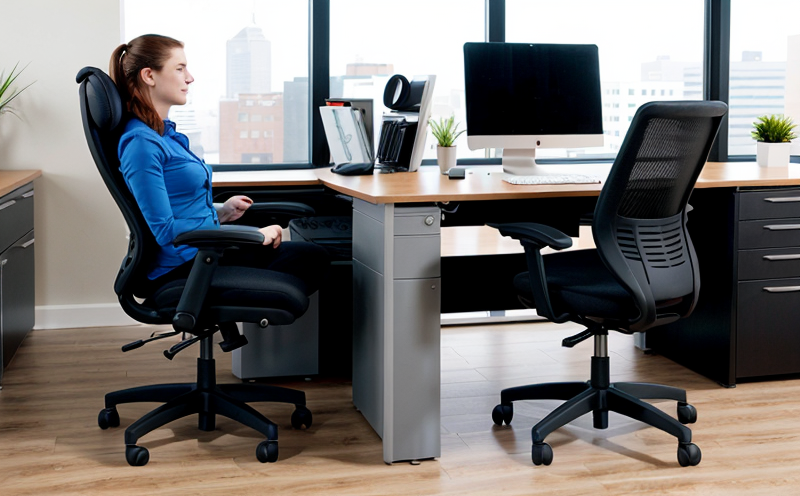BS EN 1728 Mechanical Load Testing of Office Chairs Durability
The British Standard (BS) and European Norm (EN) 1728 specifies the mechanical load testing procedure for determining the durability of office chairs. This test is crucial for manufacturers, quality managers, compliance officers, and R&D engineers looking to ensure their products meet stringent safety and performance standards.
The BS EN 1728 test involves subjecting an office chair to various static and dynamic loads over a specified number of cycles or hours. The primary goal is to assess the chair's resistance to wear and tear under typical use conditions. This includes evaluating factors such as seat durability, leg stability, and overall structural integrity.
The testing procedure is designed to mimic real-world usage scenarios, providing insights into how a product will perform in office environments where users spend extended periods sitting or moving around. By adhering to this standard, manufacturers can demonstrate compliance with international quality benchmarks, thereby enhancing their reputation and marketability.
During the test, the chair is subjected to multiple load applications, including weight distribution tests, static loading tests, and dynamic load tests that simulate actual user behavior. These tests help identify any potential weaknesses or areas for improvement in the design and manufacturing process.
The BS EN 1728 standard also emphasizes the importance of proper specimen preparation before testing begins. This includes ensuring the chair is free from defects and that all components are correctly assembled according to manufacturer specifications. Proper preparation ensures accurate test results, which are essential for making informed decisions about design modifications or quality control improvements.
The acceptance criteria outlined in BS EN 1728 define what constitutes a pass or fail result. For example, the chair must maintain its structural integrity throughout the testing period without any signs of damage or failure. Additionally, certain performance metrics like load-bearing capacity and stability under various loads are closely monitored to ensure they meet specified thresholds.
Understanding the BS EN 1728 standard is vital for those involved in office furniture design and production processes. Compliance with this standard not only ensures product quality but also provides peace of mind knowing that your offerings meet established safety guidelines. By investing time and resources into meeting these requirements, you can build trust with customers while positioning yourself as a leader within the industry.
- Static Load Testing: Simulates long-term use by applying constant weight to different parts of the chair.
- Dynamic Load Testing: Mimics typical user movements like sitting and standing repeatedly over time.
- Weight Distribution Tests: Ensures even pressure across all seating surfaces.





